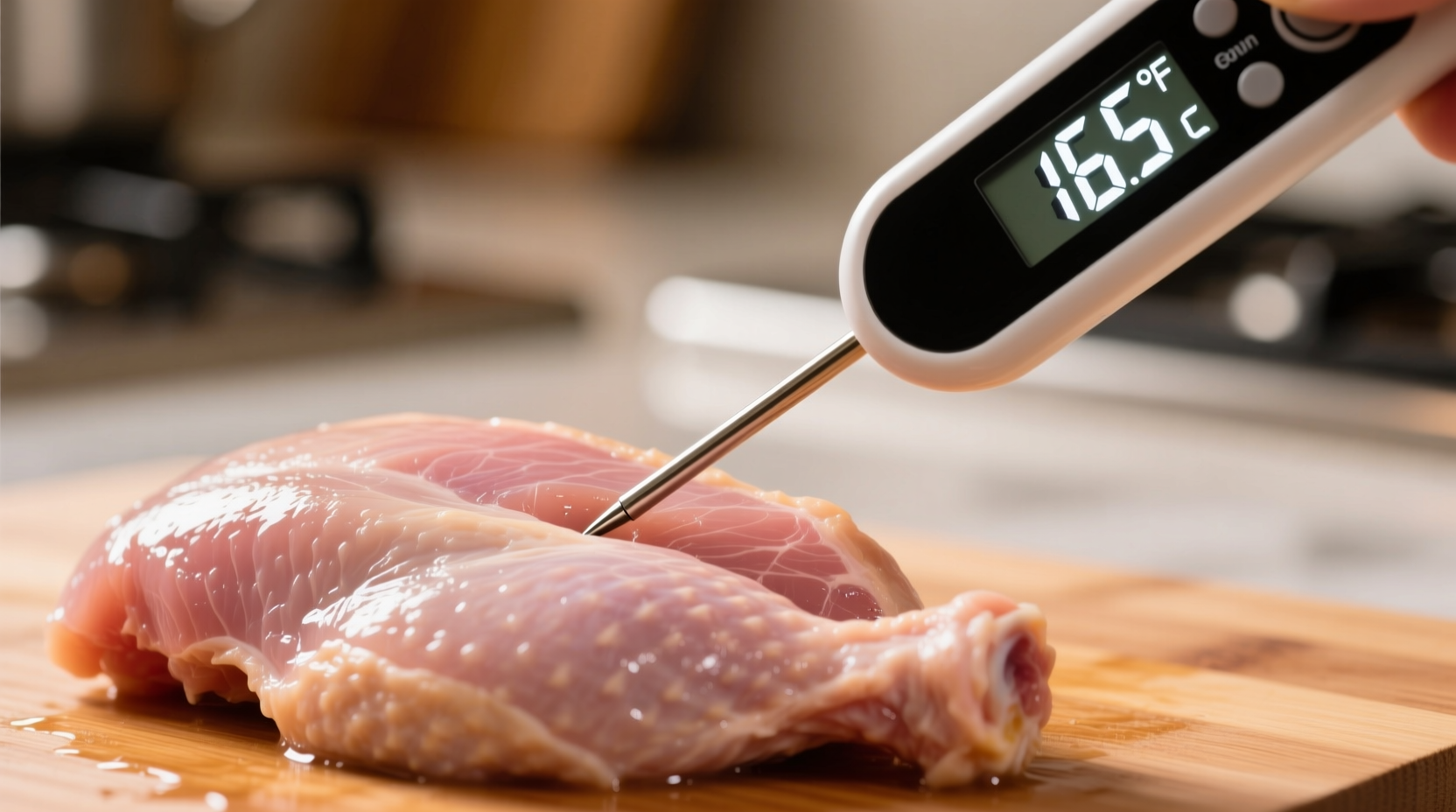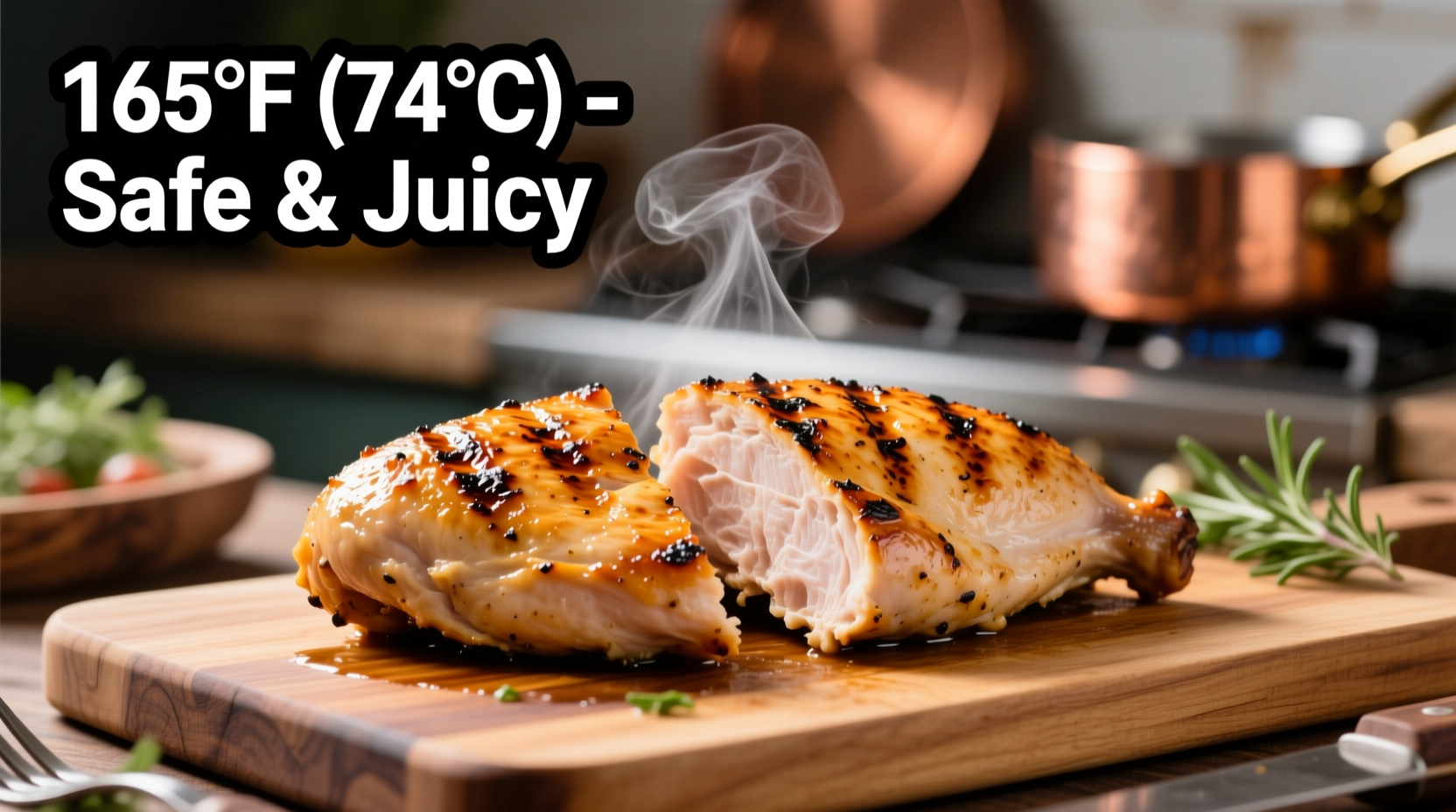Ever pulled chicken off the grill only to wonder if it's truly safe to eat? You're not alone. Millions of home cooks struggle with the critical question: what heat should chicken be cooked at to guarantee both safety and perfect results. Getting this wrong risks foodborne illness or dry, overcooked meat. This guide delivers science-backed temperature guidelines you can trust, with practical techniques verified by food safety experts.
The Non-Negotiable Safety Standard
While cooking methods vary, the internal temperature requirement remains constant: 165°F (74°C) measured with a reliable food thermometer. This isn't arbitrary—it's the minimum temperature that instantly destroys dangerous pathogens commonly found in poultry. The USDA's Food Safety and Inspection Service maintains this standard because Salmonella bacteria die within seconds at 165°F, while lower temperatures require significantly longer exposure to achieve the same safety level.
| Chicken Cut | Minimum Safe Temp | Recommended Target Temp | Resting Time |
|---|---|---|---|
| Chicken breasts | 165°F (74°C) | 160-162°F (71-72°C) | 5-8 minutes |
| Thighs & drumsticks | 165°F (74°C) | 170-175°F (77-79°C) | 8-10 minutes |
| Ground chicken | 165°F (74°C) | 165°F (74°C) | 3-5 minutes |
| Whole chicken | 165°F (74°C) | 160°F (71°C) in breast | 15-20 minutes |
Why Temperature Trumps Color Every Time
That pinkish hue in properly cooked chicken often alarms home cooks, but color doesn't indicate safety. The USDA explains that hemoglobin in chicken tissue can retain pinkness even at safe temperatures, especially in younger birds. Relying on visual cues like juice color or texture has led to countless cases of foodborne illness. A 2022 CDC report showed poultry-related Salmonella outbreaks increased by 18% when consumers relied on visual doneness indicators instead of thermometers.

Mastering Temperature Measurement
Even with the right thermometer, improper placement yields inaccurate readings. For accurate results:
- Insert probe into the thickest part, avoiding bones
- Check multiple spots in larger cuts
- Wait 10-15 seconds for digital thermometers to stabilize
- Sanitize probes between measurements
Instant-read thermometers provide results in 3-10 seconds, while leave-in probes offer continuous monitoring. The Thermapen ONE, recommended by America's Test Kitchen, delivers laboratory-grade accuracy in 3 seconds—critical when you're managing multiple cooking elements.
Understanding Temperature Evolution
Cooking temperature guidelines have evolved significantly over time. In the 1980s, recommendations varied wildly from 180°F to 140°F depending on region and cut. The standardization to 165°F emerged in the 1990s as food science advanced and Salmonella outbreaks increased. Recent research shows that maintaining 150°F for 3 minutes achieves the same pathogen reduction, but the USDA maintains 165°F as the standard to account for home cooking variables and thermometer inaccuracies.
Contextual Boundaries: When Rules Have Exceptions
While 165°F remains the universal safety standard, certain cooking methods allow for nuanced approaches:
- Sous vide cooking: Chicken can be safely cooked at 145°F for 30+ minutes due to precise temperature control
- Resting periods: Remove chicken at 160°F—carryover cooking will raise it to 165°F during proper resting
- Dark meat: Can safely reach 175°F for optimal texture without drying out
These exceptions require precise equipment and understanding—never apply them to conventional cooking methods without proper monitoring.
Avoiding Common Temperature Traps
Three critical mistakes undermine chicken safety:
- Thermometer neglect: 68% of home cooks don't use thermometers regularly (National Chicken Council survey)
- Single-point measurement: Checking only one spot misses cold zones
- Insufficient resting: Cutting too soon releases juices and lowers internal temperature
Professional kitchens implement the "two-point rule" – verifying temperature in at least two locations for every piece. Adopt this practice at home for foolproof results when cooking chicken to proper temperature.
Perfect Results Every Time
Follow this foolproof temperature workflow:
- Preheat cooking surface to appropriate temperature (400°F for oven, medium-high for stovetop)
- Season chicken and place on cooking surface
- Monitor internal temperature starting 5 minutes before expected finish time
- Remove from heat at 160-162°F for breasts, 165°F for dark meat
- Rest covered for recommended time before serving
This approach ensures chicken reaches the critical 165°F safety threshold while maintaining optimal moisture. Remember that carryover cooking during resting typically raises temperature 5-10°F—a crucial factor in achieving juicy results at safe temperatures.











 浙公网安备
33010002000092号
浙公网安备
33010002000092号 浙B2-20120091-4
浙B2-20120091-4